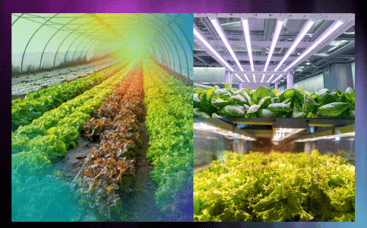
Balancing light in a greenhouse is essential for successful plant cultivation. Let's dive into this comprehensive guide, where we explore the best types of light for a greenhouse, understand how much light plants need, and uncover strategies to enhance light distribution.
Choosing the Right Light for Your Greenhouse
1. Natural Sunlight: Nothing beats the power of natural sunlight. It offers a full spectrum of light, ideal for promoting healthy plant growth and blooming. However, natural sunlight availability varies by location and season.
2. Supplemental Grow Lights: To compensate for limited sunlight, many greenhouse enthusiasts turn to supplemental grow lights. LED and high-intensity discharge (HID) lights, including metal halide and high-pressure sodium, are popular choices. LEDs are energy-efficient and can be customized for different growth stages.
Example: During cloudy northern winters, combining natural sunlight with LED grow lights ensures year-round plant growth.
Understanding Plant Light Needs
1. Light Intensity: The amount of light a plant needs depends on its species and growth stage. In general, most plants require a minimum of 10,000 to 20,000 lux (an illuminance unit) for healthy growth. However, some high-light plants like tomatoes may need up to 40,000 lux.
2. Duration: Light exposure duration is crucial. Most plants need at least 12 to 16 hours of light per day during the growing season.
Example: Herbs like basil and cilantro thrive with 14 to 16 hours of daily light. If natural daylight falls short, supplemental lighting ensures the required duration.
Enhancing Light Distribution
1. Spacing and Arrangement: Proper plant spacing is vital to ensure each receives adequate light. Taller plants should be at the back, with shorter ones closer to the front.
2. Reflective Surfaces: Incorporating reflective materials like Mylar or white-painted surfaces on greenhouse walls and ceilings helps evenly distribute light by bouncing it back onto plants.
3. Light Movers: Light movers are devices that move grow lights back and forth slowly, ensuring uniform light distribution. This prevents overexposure to direct light and shadows.
Example: Hobbyist gardeners with small greenhouses may strategically use reflective panels and light movers to evenly illuminate their prized orchid collection.
Regional Considerations
In regions with distinct climates, tailored approaches are essential:
- Desert Climates: Greenhouses in arid areas like Nevada require shading and cooling systems to protect plants from intense, year-round sunlight.
- High-Latitude Areas: Northern states like Minnesota heavily rely on supplemental lighting during dark winter months.
- Humid Regions: Greenhouse owners in places like Florida combat high humidity and intense sunshine through efficient ventilation and shading solutions.
Conclusion
Balancing light in your greenhouse is both art and science, influenced by regional factors and plant-specific needs. Whether you're protecting plants from excessive light, supplementing natural illumination, or measuring light intensity, the right strategies create an optimal environment for healthy and thriving greenhouse crops, no matter where you're located.


